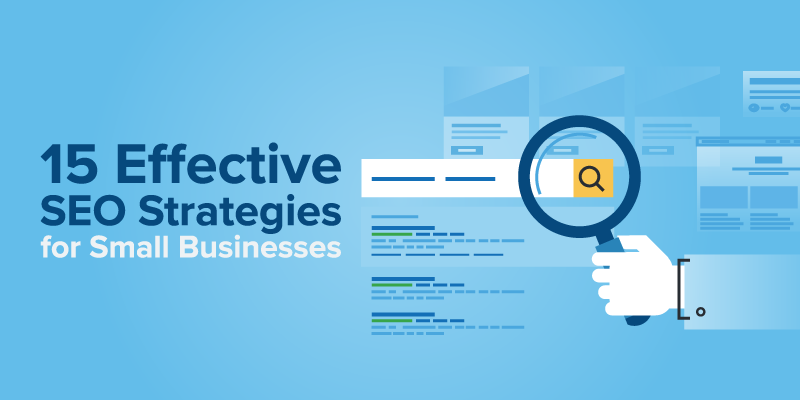 For as long as there have been websites, there have been search engines. In fact, an offline equivalent of the first search engine – Archie – actually debuted before there were even any sites on the web.
For as long as there have been websites, there have been search engines. In fact, an offline equivalent of the first search engine – Archie – actually debuted before there were even any sites on the web.

And, for as long as there have been search engines, there has been SEO. But of all the elements of building an online business, SEO is the one that seems to bring the most people to a grinding halt.
It’s never so much been the case that SEO is incredibly difficult to do as it has that doing it well – as in “number one on Google” well – is very challenging. Even the most basic SEO concepts can be very tricky for those who know nothing about it to get to grips with.
The result was that, in the ‘90s and early ‘00s, SEO companies and consultants – many of which were little more than snake oil salesmen looking to make a quick buck – charged exorbitant amounts of money to do what many business owners would have been able to do themselves.
Fortunately, there’s now enough information out there about SEO that pretty much everyone who has the time and inclination to do so can get to grips with the basics. Of course, that’s not to say that there aren’t still projects that can benefit from some expert help – trustworthy and dedicated SEO professionals have years of invaluable experience and learning, but their services may just not be an option for small businesses with a limited budget.
What You’ll Find In This Guide
There are lots of guides to SEO out there, but most tend to focus on on-site and off-site activities. While that information can be extremely useful, it’s not necessarily very accessible to true beginners because that structure doesn’t lend itself to doing things in a particular order.
We wanted to do things a little differently, and provide an easy to follow guide that will walk you through the basics of SEO at each stage of setting up a small business website, i.e. what to do before you build your site, during the process and after it.
In this guide, you can expect a snapshot of the SEO landscape in 2017 covering everything from the big picture, such as naming your website, through to more granular details like what to do with alt tags and URL architecture.
It may not cover every single tip and trick in the SEO book – this is a long guide as it is, but it’s just not possible to cover EVERYTHING – but it should help you put your best foot forward and enable you to walk away with a site that’s SEO compliant and stands a pretty good chance of ranking for some relevant keywords.
Pre Setup:
One of the issues with SEO that causes people headaches is that not everyone thinks about it from the get go. Many people will start their business, set up a site, generate some customers and only think about SEO later when they’re ramping up their marketing efforts.
The problem with this is that, at that point, you’re no longer starting with a blank slate – applying SEO to an existing site can be a little like trying to train a dog that’s picked up lots of bad habits from its previous owners. SEO may not be the first thing on your mind when you’re setting up a small business, but it certainly shouldn’t be the last.
Below we’ll be covering a few things you can do pre-launch to maximise your chances of SEO success when your business is a little more established.
Pick A Sensible Name (No Puns Allowed!)
Store names like Back to the Fuschia and Temple of Vroom certainly bring a smile if you spot them when you’re walking down the street. But you might not guess from their names that these businesses are, respectively, a florist and a driving school based in the UK.
If you’re hoping to capitalize on terms that people typically Google when they’re looking for a business, that’s a big problem. Will a name like “The London Driving School” go viral on the funny side of Twitter? No. But it’s much more likely to be found by people looking for a driving school in London.
Of course, “The London Driving School” isn’t the most exciting name for a business and we wouldn’t recommend that you go that linear. It’s difficult to imagine Apple being as successful as it has been if it had been called “Cupertino Computer Company.” The reality is that a business’s name should sit somewhere between creativity and SEO friendliness and, in fact, that’s exactly what Apple (Computer Co.) did in its early days.

2. Setting Your Main Keywords
You didn’t start your business without doing some market research, right? You probably looked at the demand for your product or service, gave serious thought to your customer base and laid out your USP in as much detail as possible.
The same should be true of your website.
As well as focusing your copy on answering problems that you know potential customers are having, you’ll also want to make sure that you’re using keywords to bring the right people to your site.
It’s incredibly difficult to get your site in the top spots of Google for single word keywords or even phrases that are just a couple of words long. For example, trying to crack the top 5 for “accountant” or “solicitor” would be incredibly difficult, if not impossible, for a small business starting up in 2017. “Divorce lawyer Brooklyn”, while still tricky, would be a much more realistic target.
Finding long-tail keywords to target with your site is key to the success of your business, and it’s a process that takes a little time, but it’s a good idea to get an idea of search volume before you start working too hard on your keywords.
For example, if you’re a driving school based in London it might seem like common sense to target the keyword “London driving school” but, as you’ll see below, there are actually many more monthly searches for “driving school London.”
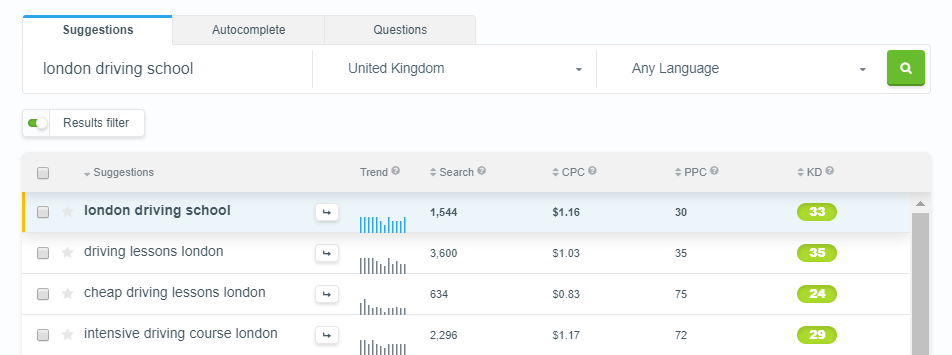
In fact, it’s very likely that such a business would target both keyword phrases. Things like word order and pluralization might well have some impact on which keywords you decide to prioritize, although search engines will often treat close variations of keywords (e.g. “hardwood floor” and “hardwood flooring”) as being the same so you don’t need to get too stressed out about this.
There are plenty of tools that show search volumes. Among the most popular ones is this keyword research tool (used in the screenshot above) by Mangools. Besides exact search volumes, it provides SERP analysis and a keyword difficulty metric. The free plan enables 5 daily lookups for unlimited time.
3. Keep An Eye On Competitors…
Once upon a time, you could use Yahoo’s Site Explorer to see where all of the sites that were linking to your competitor’s pages. Unfortunately, since this tool shuttered back in 2011, that’s no longer an option.
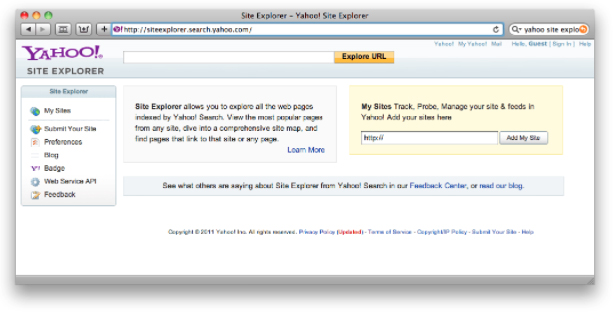
There are plenty of free alternatives, like SmallSEOTools.com’s backlink checker and Link Diagnosis, but the vast majority of professional tools are either paid or freemium. If you want to see past the first 100 backlinks or so, you’ll usually need to pay up.
But, in the same way that the owners of physical stores don’t spend every day lurking in establishments run by their competition, we’d advise against getting too hung up on what your competitors or doing. Yes, they might have just secured an awesome link from that tech news site, but there are better things to do with your time than sit and seethe with jealousy over it.
4. …But Don’t Let Them Rule You
Just because a competitor is doing something doesn’t mean that it’s also the best course of action for you. For example, they might be targeting keywords relating to a specific feature that they have or to promote a particular guide that they’ve written. If you don’t have comparable features or content, there’s absolutely no point going after these keywords because you’ll just frustrate visitors and increase your bounce rate.
Plus, if you base all of your SEO activity on what your competitors are doing you’ll always be playing catch up. There are enough keywords out there to go around, and you’ll see much better results from thinking outside the box to find your own long tail keywords than you will only* chasing those your competitors have already secured.
* We use the word “only” above because we know that some keywords and terms are too potent to simply surrender to your competitors – you’ll inevitably want to try to target those keywords too, but just copying everything your opponents have done is no way to displace them.
5. Optimization Basics
We want to keep this post as high-level as possible but, where SEO is involved, there inevitably comes a time where one needs to use some of the appropriate jargon. Although maybe jargon is a bit too strong to describe what follows. Even folks who aren’t particularly technical should recognise most of the terms below, especially if they haven’t got any familiarity at all with WordPress or a comparable CMS.
The specifics of advanced SEO may be up for debate, but basics like the below are widely agreed on:
- Keep the focus firmly on your primary keyword(s) on your homepage
- Use appropriate keywords in title tags and H1s on other pages
- Pepper keywords throughout, with a keyword density of around 2-4% (more on that below!)
- Make your URL architecture as simple and clear as possible, i.e. www.site.com/legal-dictionary/libel instead of www.site.com/pub/dictionary/post?HXID=libel&kw=legal+law+lawyer
- Use 301 redirects if you decide to optimize/rename existing pages to avoid broken links
- Ensure that image filenames, and their alt tags, include keywords where appropriate
- Distinguish between which links should be dofollow (sites/pages you’re happy to recommend to Google) vs nofollow (paid links, comments, forums etc.)
This information has been widely covered elsewhere, and just Googling appropriate terms – such as “301 redirects” or “URL architecture” – will provide you with plenty of detail on the technical side of implementing these.
During Setup:
There’s only so much SEO-ing you can do without actually writing content for your site and when you do start, there are lots of things to bear in mind. But, as you’ll see below, the art of writing search engine friendly copy is less technically intensive than many people think…with a few notable exceptions.
In fact, there are some things that you might think are essential to SEO success (because they once were) but can actually do your website harm in 2017 and beyond. We’ll be looking at keyword stuffing and other outdated practices below that are, thankfully, no longer a valid part of the SEO scene.

6. Write Naturally
One of the most confusing things about SEO is that, when you’re trying to write SEO compliant copy, you really shouldn’t be thinking about it much at all. That might sound counterintuitive, but Google has all sorts of algorithms in place that reward webmasters for writing in a way that’s reader-centric rather than one that tries to game the system.
Google is understandably vague when talking about how to rank, not least because they’re constantly tweaking the factors that determine search position, but they do heavily underline the importance of natural, genuinely useful information:
“Provide high-quality content on your pages, especially your homepage. This is the single most important thing to do. If your pages contain useful information, their content will attract many visitors and entice webmasters to link to your site. In creating a helpful, information-rich site, write pages that clearly and accurately describe your topic. Think about the words users would type to find your pages and include those words on your site.”
So does this mean that, as long as you include keywords, you should just write whatever comes into your head? Definitely not. You want to spend however much time it takes to make sure your writing is typo-free, offers all of the necessary information and is as tight as it can be. In other words, you want to write the best copy that you’re capable of…or potentially hire someone else to do it for you.
Better writing will get your read time up, your bounce rate down and almost certainly have a positive impact on the number of social shares you get too. All of that sends positive signs to Google that your site is legit, and not spammy or scammy.
With that in mind…

7. Don’t Stuff Keywords
There once was a time when you could get away with filling your page full of “New York restaurant”, “restaurant New York”, “best restaurant Big Apple” and countless variations thereof. Not only that, you could actually expect to see some pretty decent traffic from doing just that.
Fortunately, Google has since wised up to these shady tactics and it’s no longer possible to cheat the system like this. Here’s what they have to say about keyword stuffing:
“Keyword stuffing” refers to the practice of loading a webpage with keywords or numbers in an attempt to manipulate a site’s ranking in Google search results. Often these keywords appear in a list or group, or out of context (not as natural prose). Filling pages with keywords or numbers results in a negative user experience, and can harm your site’s ranking. Focus on creating useful, information-rich content that uses keywords appropriately and in context.
But, if you fail to use your keywords enough, how will search engines know what the page is about? In the past, a keyword density of around 4% has been recommended as a signal to Google that this is what the page is about. However, in 2017, most experts downplay the importance of keyword density.
John Carcutt, director of SEO at Advance Digital, argues that when searching online for optimum keyword density you’ll “find answers ranging from 2% to 12% and one as high as 20%. The interesting thing is they could all be right. Proper KD is a moving target.”
Others, however, are even more sceptical about its importance. Aaron Wall, of SEOBook, says that “KD is an over-rated concept. Even with similar keyword densities one page may rank while another does not. And that’s true even if they have the same link profile. That in and of itself should show the (lack of) value of KD.”
8. Embrace The Keyword Planner!
Wondering whether or not it might be worth creating a landing page for a particular search term? To misquote Apple, there’s a tool for that! We outlined how to use Google’s Keyword Planner to check your key search terms further up this post, but it has another function that can be extremely useful once your site is set up.
Clicking the Keyword ideas tab after entering some information about your product/service will generate a list of possible keywords for you to target, as well as how often they’re searched for, how competitive they are and the suggested bid if you decide to use AdWords to promote them.
For example, entering “London driving school” and looking at associated keyword ideas might generate terms like “London driving school Chelsea” or “best London driving school”. You can also try re-entering these terms to find more associated keyword ideas, which might be something like “cheap London driving school Chelsea” or “best London driving school for students” for the terms above.
Bear in mind that, because you get into the realm of long tail keywords very quickly when doing this, the search volumes associated with these terms will be much lower than those of 2 or 3 word phrases.
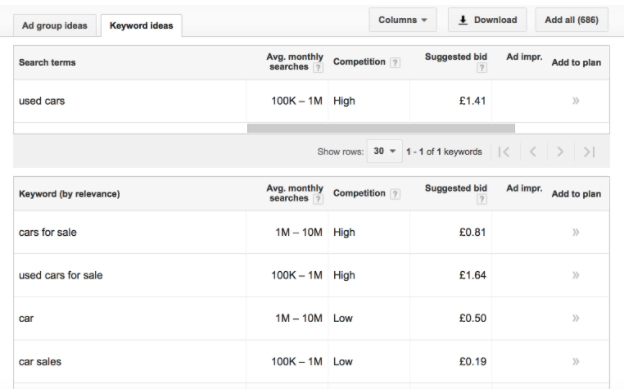
Lots of business owners don’t even know how useful Google’s Keyword Planner can be, simply because they never encounter it. That may be because, technically speaking, it’s only available to those with an active AdWords – Google’s own advertising network that runs both in their search results and on other sites all over the web – account.
However, you don’t actually need to run any PPC ads before you can start using it. It’s definitely worth signing up for an AdWords account, even if you have no intention of running paid advertising, to get your hands on this tool.
9. Verify, Verify, Verify
Signing up and verifying your site with Google Analytics, Google Webmaster Tools and Bing Webmaster Center provides clear evidence that you take your new role as a webmaster seriously. Plus, it’s part of the process that gives you access to useful tools like Google’s Keyword Planner (see above).
The good thing about this step is that it’s REALLY easy to do – it’s a quick and simple way to announce the arrival of your site to search engines though, with 571 new sites being created every minute, you shouldn’t expect this to have a huge impact in terms of your site ranking more highly.
There’s also some bad news in that, because it’s so easy to verify your web properties, just about everybody does it. That means that there isn’t too much to be gained by verifying, but there is something to be lost by not doing it. So, best to be on the safe side and just do it!
Ongoing:
The battle for great SEO doesn’t end when you hit Publish. Nope, there’s much more to be done once you’ve added some relevant pages to your site and pushed it live. Fortunately, provided you’ve taken note of all of the above, a lot of the hard work is out of the way.
Continuing SEO efforts can take up as much or as little time as you like, but it’s worth putting some time into if you want to see the maximum reward for your efforts so far. Generally speaking, ongoing SEO tends to be less technical and more creative than the pre-launch stuff and that might appeal to you if you’re of a more artistic temperament.
10. Developing Enticing Headlines
There’s a real balance between the art of writing in a way that’s both SEO compliant and appealing to potential readers. To neglect one at the expense of the other is bad form, but we really should point out just how powerful creating a great headline or post title can be…even if it isn’t necessarily one that’s as valuable for SEO.
Noah Kagan of AppSumo has written a great piece about the impact titles can have on post/page readership:
“Every time I’m browsing the web, I always see these blog post titles with amazing names. I CAN’T STOP MYSELF FROM CLICKING…How do these big sites always know the exact title to write so that I’m suckered, ahem, convinced into clicking? They test hundreds of titles for each post. They built internal tools to figure out which title will get the most shares, clicks and ultimately more traffic back to their site.”
He even includes a case study of his own to highlight their importance, using a tool called Headlines to test various different headlines for the same article:
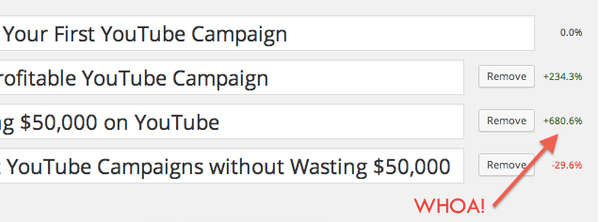
He found that, of the four headlines tested, “What I learned after wasting $50,000 on YouTube” massively outperformed the other variations. The original title, “How to Start and Optimize Your First YouTube Campaign”, is clearly better for SEO purposes. But, provided your desired outcome is to drive more traffic, then it’s worth remembering that SEO alone may not always be the best answer.
11. Live Global, Search Local
However much we talk about globalisation and the world getting smaller, there are exceptions to that rule. Someone searching on the web for a plumber, for example, is never going to hire someone based in Amsterdam if they live in Brooklyn.
Prominently featuring your location, address and phone number on your website is a good start. But there’s a lot more you can do as well, such as posting information about your business on:
Some business owners avoid review sites because they’re concerned about getting negative reviews, but it’s worth pointing out that consumers can still post negative comments about your business even if you don’t add it to these platforms yourself. It’s far better to own your reputation on them and, potentially, gain plenty of local business opportunities along the way.
Oh, and you’ll also get some high domain authority links to your site in the process. Which brings us neatly to our next point…
12. Link Building
Historically, link building has always been incredibly important. Webmasters used to pass links back and forth like presents on Christmas morning with the view that – because both inbound and outbound links were seen as indicators of an active and reputable site – everyone was a winner.
All that changed with the advent of the nofollow link back in 2005:
<a href=”http://www.example.com/” rel=”nofollow”>Link text</a>
Designed to eliminate forum and comment spam, nofollow links allow sites to link to other sites while effectively telling search engines to ignore that link for all other intents and purposes. The opposite is true of dofollow links, with rel=”dofollow”, on the other hand – a dofollow link is capable of influencing the target’s PageRank.
The advent of nofollow links means that, like keyword stuffing, some SEO professionals now pretty much ignore link building – dofollow links are much more valuable than nofollow links for SEO, but they’re very difficult to earn.
There are those who argue, like Matt Cutts (former head of Google’s webspam team) for example, that guest blogging is no longer useful for link building and – because they typically use nofollow links – paid advertisements, forum comments and many other methods of link building aren’t relevant anymore either.
However, it’s easy to argue that these arguments overstate the “death” of link building. There’s plenty of evidence to suggest that guest blogging and other forms of link building are still important to SEO in 2017 and beyond; the use of the skyscraper technique and securing dofollow links can both have substantial impact on your site’s performance.
Some good places to get dofollow links include:
- Testimonial/partner sections of other websites
- Reviews from relevant sites or bloggers
- Legitimate mentions of your business
- Features on news sites
- And, yes, sometimes still guest posts… (Check out this list of sites that accept guest posts)
Notice anything in common? All of these techniques require time and effort, and are very different to the spammy scattergun techniques that have sometimes been associated with link building in the past. But, if you’re willing to put in the time and effort needed, you can still see significant impact from link building in 2017.
13. Go Social
First things first, we should highlight how reductive it is to suggest that SEO is the only reason you’d use social media. It’s far more likely that you’ll be using it to answer customer queries, network with potential customers and/or let people see behind the scenes of your business. But you can still think of any “link juice” that happens to come your way as a result of it an added bonus.
There’s a lot of debate around whether or not social media directly factors into SEO calculations, and that’s not helped by the fact that both YouTube and Google+ are simultaneously content platforms AND social media sites.
For example, an extremely popular “how to” video on YouTube could well be the top result for a particular search term on Google and any site linked to in that video’s description is bound to see an uplift as a result. But that’s more of an indirect effect of the video’s popularity than a direct impact on the site in question’s ranking as a result of its appearance on social media.
Mark Traphagen writes the following on Stone Temple:
“Google won’t use a signal to influence its search rankings unless they have high confidence in the meaning of that signal. If Google can’t see all the connections and internal signals about content on a site, then they can’t have that kind of confidence.”
Some folks associated with Google have come right out and said that social media does not directly affect SEO but, even within the company, opinion is divided. While still at Google, Matt Cutts said the following on the matter:
“Facebook and Twitter pages are treated like any other pages in our web index. If something occurs on Twitter or on Facebook and we’re able to crawl it, then we can return that in our search results.”
In other words, while it’s unlikely that tweets and Facebook posts will ever rank #1 on Google for short tail terms, there’s absolutely a possibility that they’ll show up somewhere in the mix. That’s particularly true for long tail terms that you won’t necessarily be targeting on your site, but may appear in your social media posts.
14. Conduct Monthly Health Checks
There are WordPress plugins that notify you of things like broken links or poor SEO, but it’s also a good idea to spend a little time every month checking and making a note of how your site is performing.
Moz and Serpfox are two great paid options for doing this, but there are free alternatives out there too. SERPs.com, for example, will let you track individual keywords on your pages and SEMrush provides easy to understand data and analytics about your entire site.
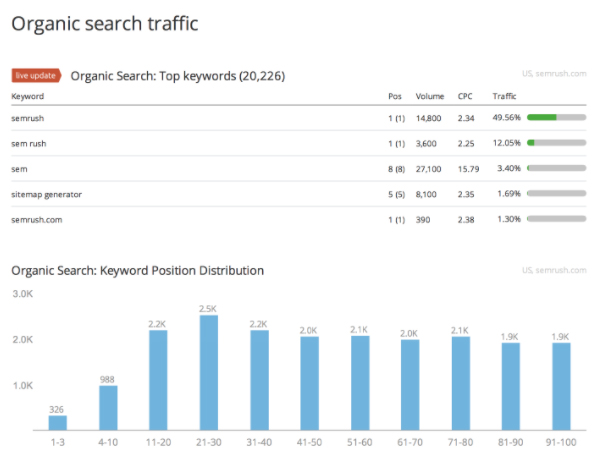
Source: SEMrush
Tools like this are so useful because they show you keywords you’re ranking for that you may not even be aware of. And there’s nothing better than accidentally ranking in the top ten for a keyword that you weren’t even targeting…although we should point out that it’s a fairly rare experience.
If keywords and/or pages aren’t performing as expected, don’t simply kill them. Google doesn’t like broken links, so you should view this as an opportunity to run some tests by, say, adjusting the length of your content, mixing up its structure and tweaking the number of keywords you use.
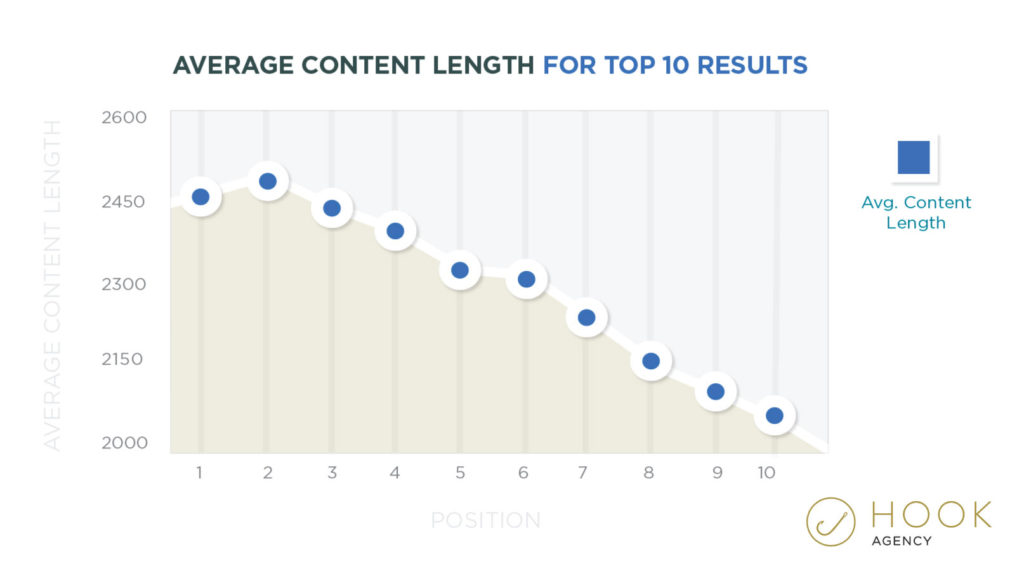
Hook Agency‘s graph shows how length affects position in Google rankings
15. Let Tests Run
Subjecting the content on your websites or in your email marketing to split testing is a great move. It’ll not only improve the performance of what you’ve already written, but will also help you to figure out the type of content, tone of voice etc. that best suits your ideal customer.
However, it’s absolutely vital that you let tests run long enough to reach statistical significance, Peep Laja of ConversionXL.com writes that, in many cases, “tests are called too early and/or sample sizes are too small. You should not call tests before you’ve reached 95% or higher. 95% means that there’s only a 5% chance that the results are a complete fluke.”
There are some great split testing tools out there, and you’d think that they’d understand this better than anybody. Unfortunately, that’s not always the case. Laja continues: “A/B split testing tools like Optimizely or VWO both tend to call tests too early: their minimum sample sizes are way too small.”
While we’re on the subject of split testing, we’d recommend trying one of these tools rather than relying on creating similar landing pages with only a few differences. Do the latter and you risk being punished by search engines for duplicate content and/or 404 pages.
Conclusion
The idea of this guide was to create something that absolute beginners could follow from start to finish and come away with at least some idea of how to implement some SEO basics when building their site.
While guides with a balance of on-site vs off-site activities are often chock full of useful information, it’s not immediately obvious to newbies what they should be doing first. We hope that the above makes that process a little smoother!
SEO continues to evolve at a rate of knots, and much of the information out there relating to it is outdated and no longer relevant. In fact, give it a few months and information in even the most recent articles will be starting to turn stale. The good news is that most of the key tenets of SEO remain unchanged:
- Use a healthy mix of short and long tail keywords (sparingly)
- Write naturally and with your reader in mind
- Try to build genuine links from relevant pages
- Monitor the performance of your pages and benchmark against competitors
The not so good news is that truly mastering, and implement, effective SEO can take a lifetime to master. If you don’t have a lifetime to spare, at least the above guide should give you a good start!

Last Updated on June 24, 2022 by Ian Naylor
24 thoughts on “SEO 101: 15 Effective SEO Strategies for Small Businesses”